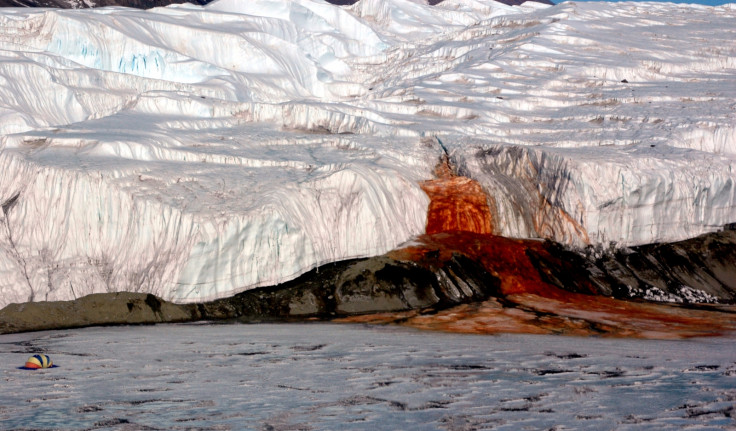Antarctica: Vast network of salty, liquid water filled with life discovered under Dry Valleys

A vast network of salty water filled with life lies under the icy soils of Antarctica's Dry Valleys, a study has discovered.
It was while studying the Blood Falls, or blood red stain on the snout of Taylor Glacier that the team stumbled upon the subglacial world of salty, liquid water.
The liquid water underneath the icy soil in Taylor Valley stretches from the coast to at least 12km inland. It connects the valley's scattered lakes.
The water is twice as salty as seawater, the scientists reported.
The Dry Valleys region is mostly ice-free, except for a few isolated glaciers, says Live Science.
Blood Falls that pours into Lake Bonney in the southernmost of the three largest Dry Valleys, has been shown to represent a much larger hydrologic network. The red stain has been attributed to microbial life in the waters.
The findings are published in the journal Nature Communications.
"We've learned so much about the dry valleys in Antarctica just by looking at this curiosity," said lead study author Jill Mikucki, a microbiologist at the University of Tennessee, Knoxville. "Blood Falls is not just an anomaly, it's a portal to this subglacial world."
How the water turned so salty is not exactly known. It could be due to freezing and evaporation of larger lakes that once filled the valley.
Or, the brine could be the remnant of ocean water that once flooded the canyons before retreating.
To detect the salt water, the team used a newly developed airborne electromagnetic sensor in Taylor Valley which creates a magnetic field to pick up conductivity differences in the ground to a depth of about 1,000 feet.
What is exciting for researchers is that the Dry Valleys are similar to valleys found on Mars, implying that briny groundwater could also have formed on the Red Planet when it turned from having liquid water to a dry environment.
© Copyright IBTimes 2025. All rights reserved.





















